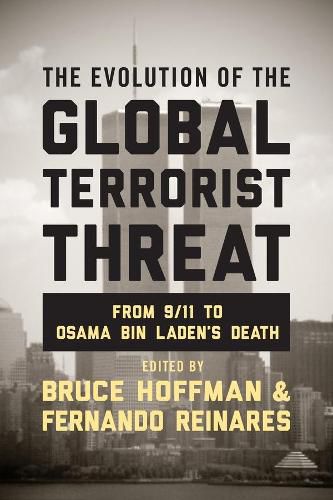Readings Newsletter
Become a Readings Member to make your shopping experience even easier.
Sign in or sign up for free!
You’re not far away from qualifying for FREE standard shipping within Australia
You’ve qualified for FREE standard shipping within Australia
The cart is loading…






Examining major terrorist acts and campaigns undertaken in the decade following September 11, 2001, internationally recognized scholars study the involvement of global terrorist leaders and organizations in these incidents and the planning, organization, execution, recruitment, and training that went into them. Their work captures the changing character of al-Qaeda and its affiliates since the invasions of Afghanistan and Iraq and the sophisticated elements that, despite the West’s best counterterrorism efforts, continue to exert substantial direction over jihadist terrorist operations.
Through case studies of terrorist acts and offensives occurring both in and outside the West, the volume’s contributors investigate al-Qaeda and other related entities as they adapted to the strategies of Operation Enduring Freedom and subsequent U.S.-led global counterterrorism programs. They explore whether Osama bin Laden was indeed reduced to a mere figurehead before his death or continued to influence al-Qaeda’s global activities. Did al-Qaeda become a loose collection of individuals and ideas following its expulsion from Afghanistan, or was it reborn as a transnational terrorist structure powered by a well-articulated ideology? What is the preeminent terrorist threat we face today, and what will it look like in the future? This anthology pinpoints the critical patterns and strategies that will inform counterterrorism in the coming decades.
$9.00 standard shipping within Australia
FREE standard shipping within Australia for orders over $100.00
Express & International shipping calculated at checkout
Examining major terrorist acts and campaigns undertaken in the decade following September 11, 2001, internationally recognized scholars study the involvement of global terrorist leaders and organizations in these incidents and the planning, organization, execution, recruitment, and training that went into them. Their work captures the changing character of al-Qaeda and its affiliates since the invasions of Afghanistan and Iraq and the sophisticated elements that, despite the West’s best counterterrorism efforts, continue to exert substantial direction over jihadist terrorist operations.
Through case studies of terrorist acts and offensives occurring both in and outside the West, the volume’s contributors investigate al-Qaeda and other related entities as they adapted to the strategies of Operation Enduring Freedom and subsequent U.S.-led global counterterrorism programs. They explore whether Osama bin Laden was indeed reduced to a mere figurehead before his death or continued to influence al-Qaeda’s global activities. Did al-Qaeda become a loose collection of individuals and ideas following its expulsion from Afghanistan, or was it reborn as a transnational terrorist structure powered by a well-articulated ideology? What is the preeminent terrorist threat we face today, and what will it look like in the future? This anthology pinpoints the critical patterns and strategies that will inform counterterrorism in the coming decades.